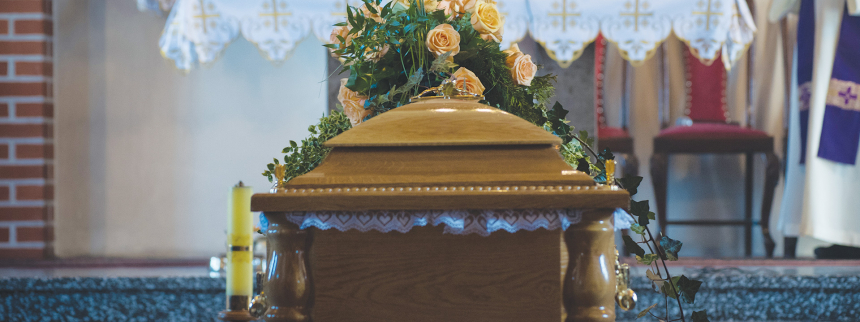
While the reality of death inevitably causes sadness and grief, the Catholic funeral rites are meant, first and foremost, to offer worship, praise and thanksgiving to God for the gift of life and to instill hope. For how we deal with death has a direct impact on how we deal with life.
The Order of Christian Funerals (OCF) describes the church’s ministry to the deceased and their family in these words: “At the death of a Christian, whose life of faith was begun in the waters of baptism and strengthened at the eucharistic table, the church intercedes on behalf of the deceased because of its confident belief that death is not the end nor does it break the bonds forged in life. The church also ministers to the sorrowing and consoles them in the funeral rites with the comforting word of God and the sacrament of the Eucharist.” (Order of Christian Funerals, No. 4).
My purpose here is to help you think through the liturgical aspects of your funeral. The structure of the funeral rites is similar to the sacred triduum, which is one continuous liturgy that takes place over three days, beginning with the Mass of the Lord’s Supper, followed by Good Friday and then finally the Easter Vigil. The dismissal doesn’t occur until the end of the Easter Vigil. Likewise, the dismissal at Catholic funerals doesn’t happen until the end of the committal. Thus, each part of a Catholic funeral – the vigil for the deceased, the funeral Mass and the committal – are integral parts of the whole funeral process.
The vigil is the first rite. It is a time of solemn preparation in which the Christian community keeps watch with the family. It normally occurs in the place where the body is prepared for burial, the funeral home/center, although it may take place in your parish church.
In this service, the word of God is the primary source of consolation and hope in the face of death. For many Catholics it is customary to recite the rosary on the night before the funeral Mass and to overlook the vigil. But the vigil is an essential part of the funeral rites and should not be omitted. The recitation of the rosary is a beautiful devotion, but is not part of the vigil. If you wish to recite the rosary, it should be done before the vigil service begins.
The funeral is normally celebrated within Mass, but there may be occasions when this may not be possible: for example, on certain solemnities of obligation when a funeral Mass is not permitted, such as Holy Thursday and the Easter triduum and the Sundays of Advent, Lent and the Easter season. Also, if a priest is not available, a deacon may preside over the funeral rite, or if the family simply wishes to have a funeral liturgy without Mass.
The funeral Mass takes place in the church because this is the place where the Christian community gathers for worship and where the deceased received the sacraments. The rite begins with the reception of the body at the entrance of the church, where the deceased first entered the church in baptism. This is signified by the sprinkling of the coffin with holy water and the placement of a white funeral pall. The American flag, if there is one, is to be removed from the coffin at the entrance and replaced with the pall. The flag is replaced after Mass when the coffin is taken from the church.
A eulogy is not part of the funeral Mass. The proper place for a eulogy, if the family desires it, is at the vigil service, or in the church before the funeral Mass begins, or at the reception afterward. The reason for this is because the eulogy is about the deceased, while the funeral rites focus on God and the hope we have been given through resurrection of Christ. The service concludes with the final commendation and the words: “In peace let us take our brother/sister to his/her place of rest.”
Cremation is becoming more and more common among Catholics. While cremation is allowed, the church encourages full body burial. Catholic teaching stresses the importance of the burial of the body, because it was the body that was washed in baptism. It was the body that was anointed with sacred chrism in confirmation. It was the body that that was fed with the bread of life and it was through the body that the individual touched other lives. Insofar as the church permits cremation, it should take place after the funeral Mass.
After the funeral Mass, the body is then taken to its place of burial where the third and final part, the committal, takes place. The rite of committal concludes the funeral rites and is the final act of the Christian community in caring for the body of one of its members. In committing the body to its final resting place, the Christian community expresses its hope in the resurrection of the dead. The rite also expresses the communion between the living and the dead and our belief that in death life is changed, not ended.
LEARN MORE
About “Policies and Guidelines Regarding the Celebration of Catholic Funeral Rites, Diocese of Sacramento” by reading the March 2012 document promulgated by Bishop Jaime Soto at www.scd.org/funeralguidelines

